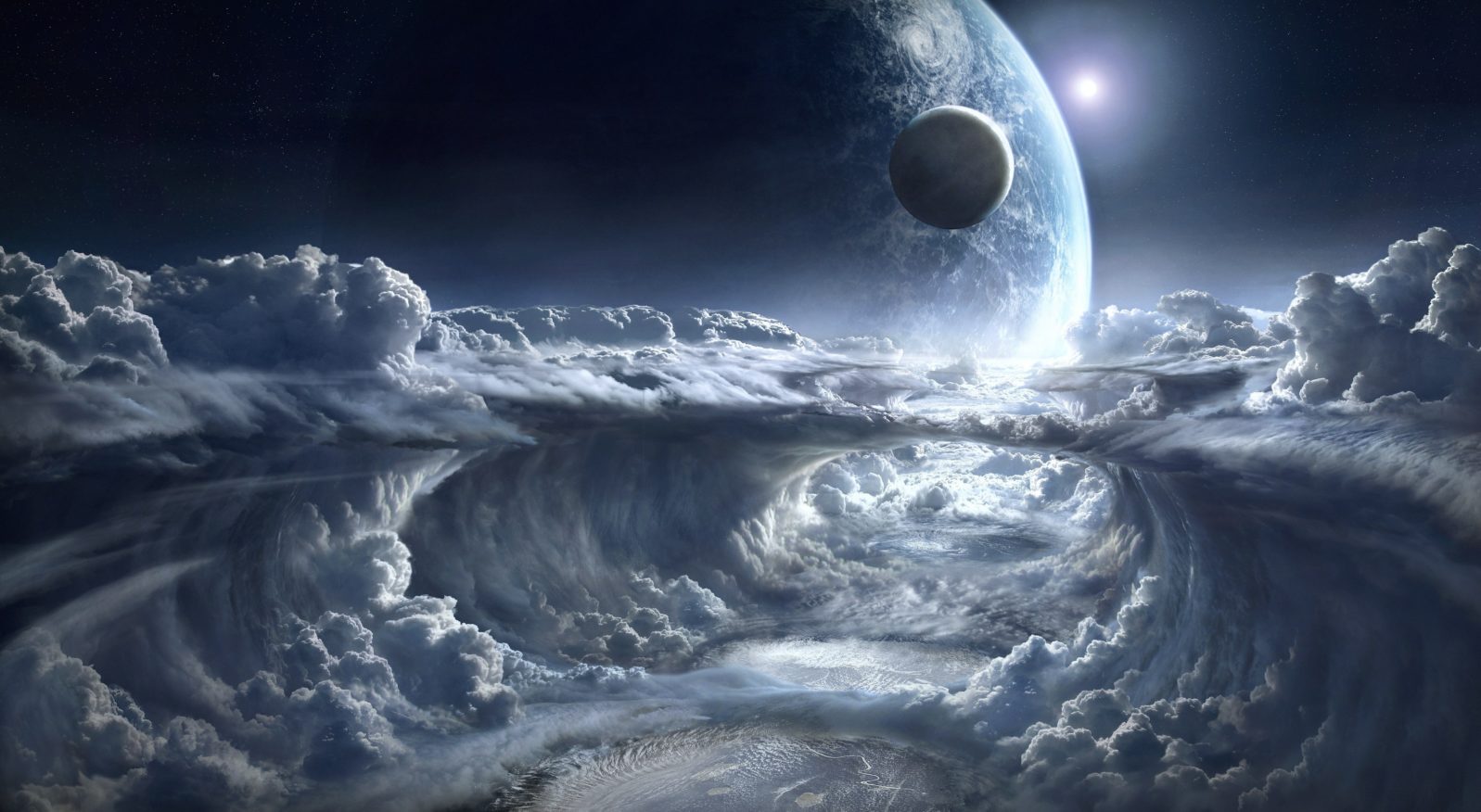News From the Search for Extraterrestrial Life 4
Just as much promising data about habitable planets is streaming in from the telescopes, pioneer ET astronomer Frank Drake has diedLots of places to look: From Universe Today: To date, 5,084 extrasolar planets have been confirmed in 3,811 planetary systems, with another 8,912 candidates awaiting confirmation. (Matt Williams, September 9, 2022)
Planets with water have been in the news:
According to a new study, “… it turns out that water-rich worlds are far more common in the Milky Way Galaxy than we first thought… ” – Jerusalem Post (Aaron Reich, September 9, 2022) The paper requires a fee or subscription.

“A new type of exoplanet — one made half of rock and half of water — has been discovered around the most common stars in the universe, which may have great consequences in the search for life in the cosmos, researchers say.” – Space.com (Charles Q. Choi, September 8, 2022) That bodes well for life.
However, the water is probably not in a surface ocean: “Instead, the water could exist mixed into the rock or in pockets below the surface. Those conditions would be similar to Jupiter’s moon Europa, which is thought to have liquid water underground.” – Eurekalert (University of Chicago, September 8, 2022)
The new type of planet hasn’t yet been given a name.
100 light years away:
Some think a super-Earth out at that distance is our next best chance for finding extraterrestrial life:
“Planet c, formally known as either LP-890-9c or SPECULOOS-2c, orbits its dim red star once every 8.5 days. At that distance, it’s firmly in the system’s habitable zone: the region where temperatures are just right for liquid water and, potentially, for life.” – Inverse (Kiona Smith, September 8, 2022) It’s probably a rocky planet too, based on its size.
“Now LP 890-9c only takes 8.46 days to orbit the star at a distance of about 6 million kilometers with an average temperature of 0° C (30°F). If this planet is rocky and carbon dioxide in its atmosphere, it could actually be temperate enough for life to exist.” – TechEblog (September 9, 2022)
72 light years away:
“The James Webb Space Telescope has found a strange alien world shrouded in clouds of sand-like silicate grains.” – Space.com (Teresa Pultarova, September 7, 2022)
The exoplanet with sand clouds is VHS 1256b, a brown dwarf orbiting two small red dwarf stars.
Closer, at 20.3 light years away:
An exoplanet orbiting two stars is now portrayed more clearly:
“The orbit of an exoplanet around a star in a binary star system has been portrayed in three dimensions for the first time. The planet orbits its star at a different angle to the plane of the orbit of the two stars, and the misalignment could offer clues as to how planets form in binary systems.” – Space.com (Keith Cooper, September 7)
Close to home: Mars
Green sand found on Mars shows that it was once wet: “Olivine is also what makes the beaches on Hawai’i seem dark green, and it has the same effect on Mars. But on Mars, its age makes it even more special, especially as a laboratory for understanding the workings of the early solar system.” – Universe Today (Andy Thomaswick, September 5, 2022
New research at International Space Station suggests that if researchers are to find life, past or present, on Mars, it is likely below the surface, due to the bombardment of ultraviolet light: “”Ultraviolet [radiation] only penetrates the first few micrometers to millimeters of the Martian surface, so organic compounds and potential biomolecules should be protected beyond these depths,” [Mickael] Baqué told Space.com. (One micrometer is about 1% the width of a strand of hair; 1 millimeter is smaller than a grain of sand.) Dig a little deeper, and the Martian regolith should provide adequate shielding from the radiation.” – Space.com (Keith Cooper, September 9, 2022)
At home, we regret to inform… :

The U.S. Government Accounting Office is not happy with NASA’s efforts to return astronauts to the Moon: “NASA, however, does not yet have guidance for creating or managing Artemis mission schedules that will help integrate the individual programs required for launch. NASA is using existing schedule management guidance developed for individual programs, not multi-program missions. Without guidance specifically for multi-program missions, NASA lacks reasonable assurance it has consistent schedule management practices in place for the Artemis schedules” (September 2022)
Astronomer Frank Drake, a Search for Extraterrestrial Intelligence (SETI) founder and author of the Drake Equation has passed away, at the age of 92. “While so far, the SETI search has come up empty, we now can plug in at least one of the numbers: the fraction of stars with planets in our galaxy. Because of the Kepler planet hunting mission, we know that that almost all stars have planets, and there could be as many as 300 million Earth-sized rocky worlds in the Milky Way that orbit sunlike stars.” Universe Today (Nancy Atkinson, September 3, 2022)
Exploring a life-friendly universe…
As noted earlier, one reason to believe we can find life on other planets is that our universe is fine-tuned for life. Here’s another example offered by University of Western Australia cosmologist Luke Barnes, involving the Standard Model of our universe, where the density is very close to critical:
A standard cosmology textbook case for cosmic inflation goes as follows (e.g.. Peacock, 1998). In the standard model of cosmology, the geometry of the universe can be negatively curved, flat, or positively curved, depending on whether the density universe is less than, equal to, or greater than the critical density. In this model, two facts seem to be in tension with each other. Firstly, the matter in the universe causes the density of the universe to evolve away from critical. Secondly, observations tell us that the density of the universe is very close to critical.
What about in the past? If we extend the model back to nucleosynthesis, about 1 second after the beginning, then the density of the universe must be within one part in 1015 of the critical density in order to still be close to critical today. The further we push back, the closer the constraint: at the Planck time, it is one part in 1055. … We must simply assume that the density of the universe was extremely close to critical in its earliest moments.
Luke Barnes, “The Fine-Tuning of the Universe for Life” at ArXiv (October 18, 2021)
Here are news notes from the last month or so:
News from the search for extraterrestrial life 3: The Webb gets a good closer look at an exoplanet. In other news, we’re learning more about Europa’s oceans, an ancient Martian lake, a star with “squarish” waves — and asteroids that are too close to home. (September 3, 2022)
News from the search for extraterrestrial life 2: A new ocean planet, a planet with carbon dioxide, and new discoveries about life chances on Mars. Progress? We now need the Artemis Accords to divvy up nations’ rights re Moon exploration — and the far side might host a telescope better than the Webb. One reason for hope for finding life elsewhere in the universe is that the universe appears to be fine-tuned for life. What the universe won’t do is tell us where the life is. (August 27, 2022)
and
News from the search for extraterrestrial life 1: Super-Earths that might have life, choosing life forms to take to Mars, and self-replicating robots… NASA is looking at developing a swarm of tiny robots to look for extraterrestrial life on oceanic worlds like Europa or Enceladus. (August 20, 2022)
